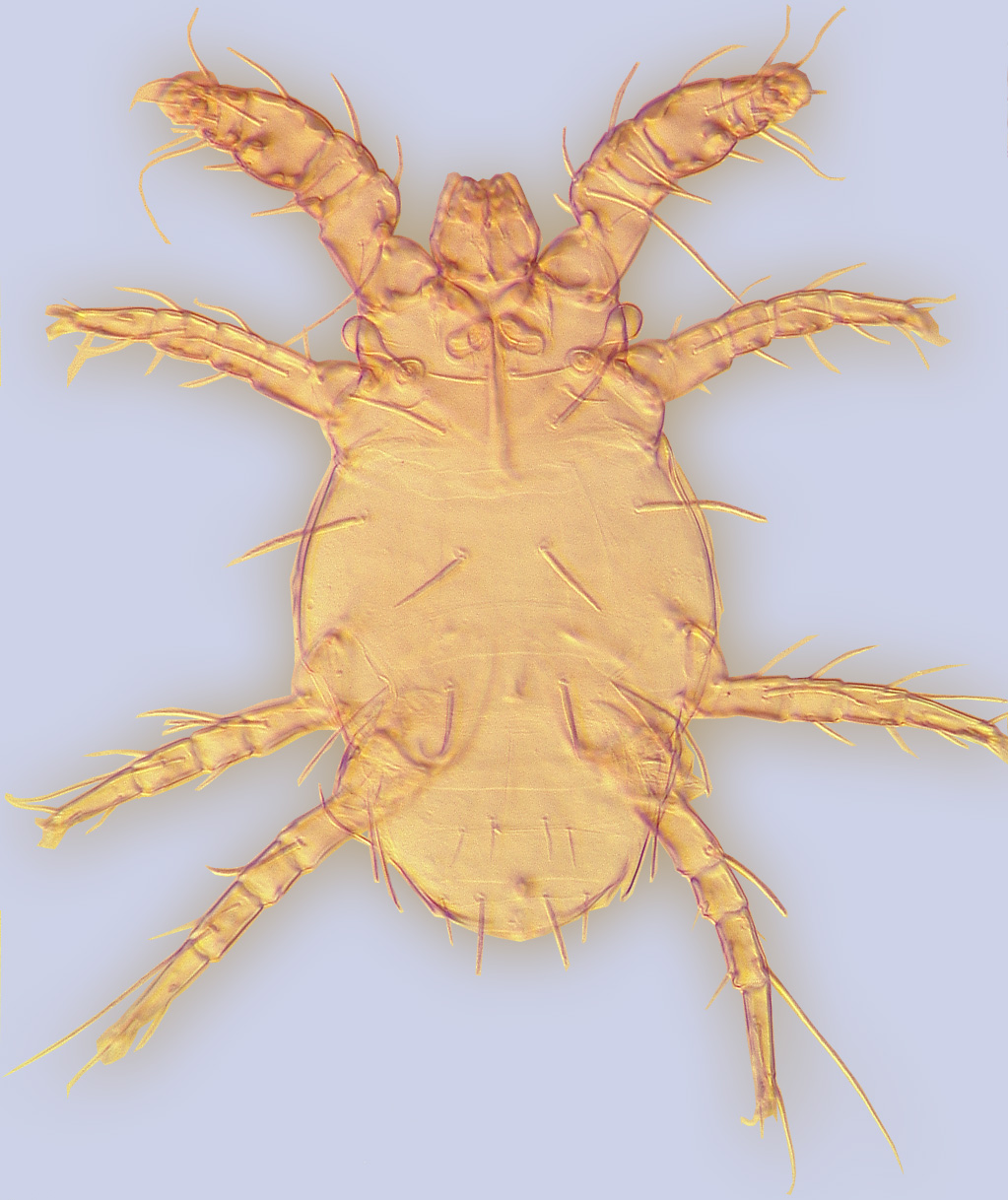Bee Mites : Acari : Acariformes : Trombidiformes : Trochometridiidae : Trochometridium
Trochometridium tribulatum Cross, 1965
Trochometridium tribulatum Cross, 1965: 120, Figs 29-40; Cross & Bohart, 1969: 209 (observation on mites inside nests and phoresy); Cross & Bohart, 1969: 286 (observation on host range and distribution); Eickwort, 1979: 578 (notes on biology); Rack & Eickwort, 1980: 277 (suggested that should be in Pyemotoidea); Lindquist, 1985: 1974, Figs 1-5; Eickwort, 1990: 474 (short note on biology); Eickwort, 1994: 231 (short note on biology); Neff & Rozen, 1995: 11 (host record); Fain at al., 1999: 165 (note); Khaustov & Eidelberg, 2002: 43 (comparison with T. kazachstanicum); Hajiqanbar at al., 2009: 2701 (included in key, comparison with T. iranicum); Mortazavi et al., 2011: 57 (comparison with T. kermanicum).
Material (show database records).
Hosts. (some records are probably accidental).
North America:
Calliopsis (Nomadopsis) scutellaris Fowler, 1899
Calliopsis (Nomadopsis) anthidia Fowler, 1899
Calliopsis (Calliopsis) andreniformis Smith, 1853
Calliopsis (Calliopsima) coloradensis Cresson, 1878
Anthemurgus passiflorae Robertson, 1902
Halictus farinosus Smith, 1853 (type host)
Halictus ligatus Say, 1837
Sphecodes arvensiformis Cockerell, 1904
Nomia (Acunomia) melanderi Cockerell, 1906
Nomia (Epinomia) nevadensis Cresson, 1874
Nomia nevadensis bakeri Cockerell, 1898
Megachile parallela Smith, 1853
Oreopasites scituli Cockerell, 1906
Exomalopsis birkmanni Cockerell, 1922
Melissodes fimbriata Cresson, 1878 (as "Melissoides fimbrioides")
Diadasia enavata (Cresson, 1872)
Myrmosa unicolor Say 1824
Dasymutilla sp. (Hymenoptera: Mutillidae)
Liris argentata (Beavois, 1811) (Hymenoptera: Sphecidae)
Cicindela willistoni LeConte 1879 (Coleoptera: Carabidae).
Afrotropic region:
Aphodius sp. (Coleoptera: Scarabaeidae)
Ossibia sp. (Coleoptera: Cerambycidae)
(Cross and Bohart, 1979; Lindquist, 1985; Neff and Rozen, 1995; our data).
Distribution (show map). Canada: British Columbia; USA: Maryland, Idaho, California, Utah (type locality), Iowa, Kansas, Texas, Arizona, Alabama; Mexico: Tamaulipas; Egypt: Gizah; Sudan, South Africa: Gauteng (Cross and Bohart, 1979; Lindquist, 1985; our data).
Biology. The host range includes andrenid, halictid, megachilid, and apid bees, as well as sphecid wasps and Coleoptera. Perhaps beetles become infested by mites dispersing from bees or wasps nesting in the same soil. The dispersing stage is the adult female. The female has a pair of internal sacs between legs III and IV that are termed sporothecae. Sporothecae contain fungal spores which are transferred by the mite to provisioned cells of ground nesting bees. So far the mite is known from the nests of bees of the genera of Calliopsis, Nomia, Halictus, and Anthemurgus. The bee egg or young larva dies in the infested cell as a result of development of the fungus and mites. Eggs are laid instead of being retained within the physogastric mother. These hatch into inactive larvae, which molt to males and females. The new generation of mites develops upon the fungal mycelium. The female is the only stage that feeds (Cross and Bohart, 1979; Lindquist, 1986; Neff and Rozen, 1995).
References
Image Gallery
B. OConnor and P. Klimov ©
Created: May 01, 2012
Last modified: 

